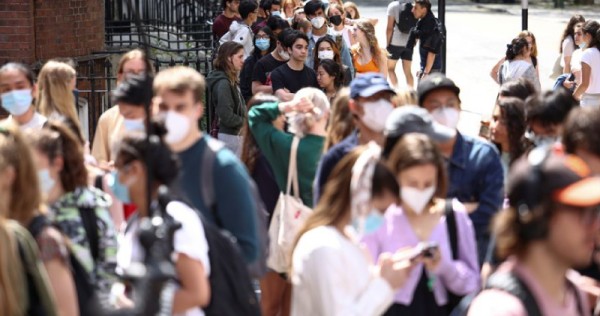LONDON – England’s Chief Medical Officer Chris Whitty said on Wednesday that Covid-19 transmission was currently highest in 12- to 15-year-olds, and that almost all unvaccinated children would get infected at some point.
All those in the 12-15 age bracket in England are to be offered a Covid-19 vaccine after Whitty and his colleagues said last week that children would benefit from reduced disruption to their education.
“There is definitely substantial transmission happening in this age group,” Whitty told lawmakers. “In fact, the age group we’re talking about is the one in which the highest rate of transmission is currently occurring, as far as we can tell.”
Britain reported 34,460 new Covid cases on Wednesday, and has averaged over 20,000 new daily cases since late June.
Whitty said the vaccine advice focussed purely on the benefit to the children, and had not been made for political reasons or for the benefit of more vulnerable adults.
Although around half of children have probably already had Covid-19, he said, protection may wane and a vaccination programme would be less disruptive to schools than if the children caught Covid-19.
“The great majority of children who have not currently had Covid are going to get it at some point,” he said.
“It won’t necessarily be in the next two or three months but they will get it sooner or later because this is incredibly infectious and because immunity wanes, we’re not going to see a situation where it just sort of stops at a certain point.”
Whitty said vaccines would reduce the risk of infection by 50 per cent, possibly more.
The highly transmissible Delta variant, now dominant in Britain, has made health officials around the world reassess how the pandemic is managed, and especially the impact of vaccines on transmission.
“We do not think it is possible to stop completely transmission,” Wei Shen Lim, Covid-19 chair of the Joint Committee on Vaccination and Immunisation, told the lawmakers.
“That does not mean that there will be no impact on transmission.”
This article was first published in Asia One . All contents and images are copyright to their respective owners and sources.











